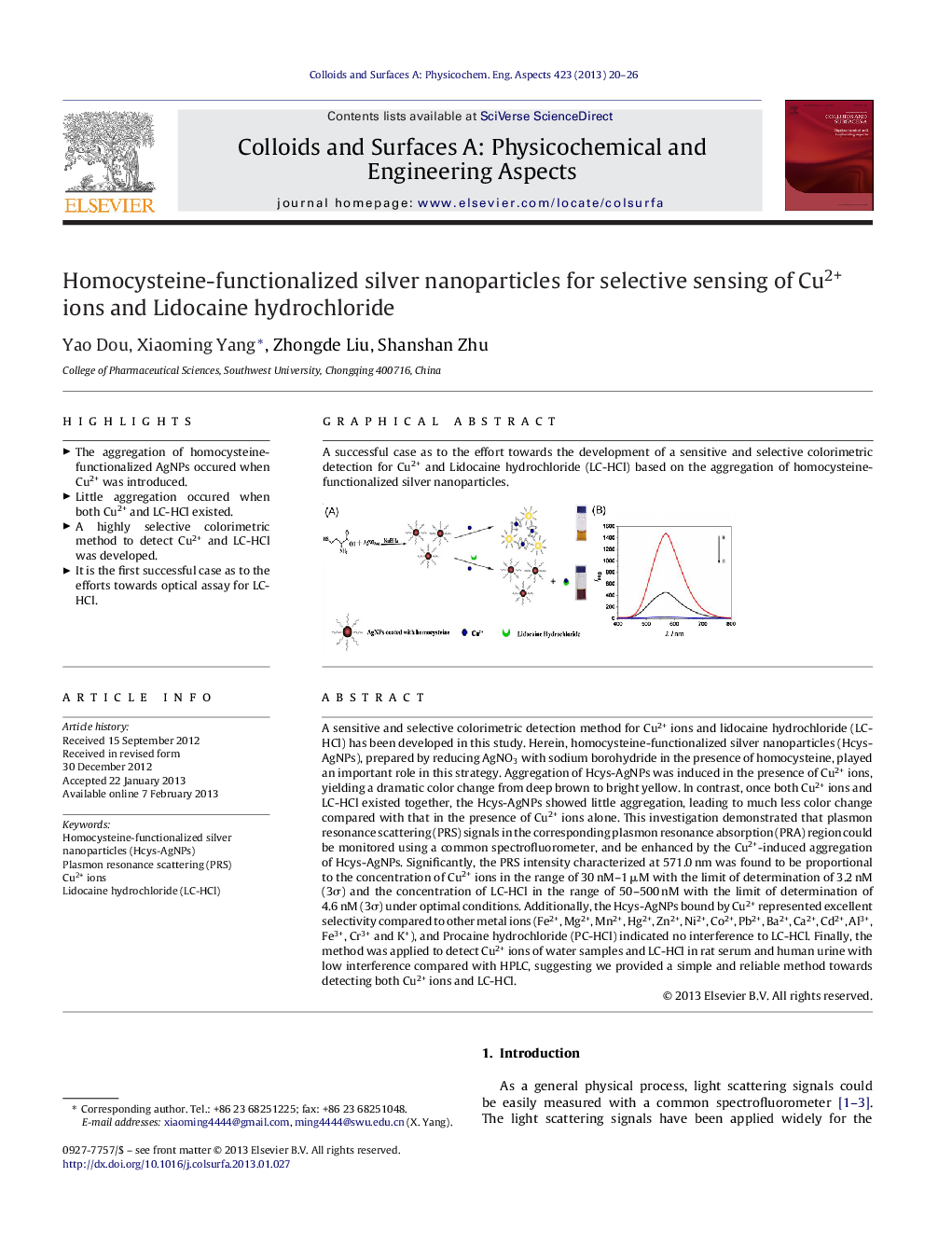| Article ID | Journal | Published Year | Pages | File Type |
|---|---|---|---|---|
| 593567 | Colloids and Surfaces A: Physicochemical and Engineering Aspects | 2013 | 7 Pages |
A sensitive and selective colorimetric detection method for Cu2+ ions and lidocaine hydrochloride (LC-HCl) has been developed in this study. Herein, homocysteine-functionalized silver nanoparticles (Hcys-AgNPs), prepared by reducing AgNO3 with sodium borohydride in the presence of homocysteine, played an important role in this strategy. Aggregation of Hcys-AgNPs was induced in the presence of Cu2+ ions, yielding a dramatic color change from deep brown to bright yellow. In contrast, once both Cu2+ ions and LC-HCl existed together, the Hcys-AgNPs showed little aggregation, leading to much less color change compared with that in the presence of Cu2+ ions alone. This investigation demonstrated that plasmon resonance scattering (PRS) signals in the corresponding plasmon resonance absorption (PRA) region could be monitored using a common spectrofluorometer, and be enhanced by the Cu2+-induced aggregation of Hcys-AgNPs. Significantly, the PRS intensity characterized at 571.0 nm was found to be proportional to the concentration of Cu2+ ions in the range of 30 nM–1 μM with the limit of determination of 3.2 nM (3σ) and the concentration of LC-HCl in the range of 50–500 nM with the limit of determination of 4.6 nM (3σ) under optimal conditions. Additionally, the Hcys-AgNPs bound by Cu2+ represented excellent selectivity compared to other metal ions (Fe2+, Mg2+, Mn2+, Hg2+, Zn2+, Ni2+, Co2+, Pb2+, Ba2+, Ca2+, Cd2+, Al3+, Fe3+, Cr3+ and K+), and Procaine hydrochloride (PC-HCl) indicated no interference to LC-HCl. Finally, the method was applied to detect Cu2+ ions of water samples and LC-HCl in rat serum and human urine with low interference compared with HPLC, suggesting we provided a simple and reliable method towards detecting both Cu2+ ions and LC-HCl.
Graphical abstractA successful case as to the effort towards the development of a sensitive and selective colorimetric detection for Cu2+ and Lidocaine hydrochloride (LC-HCl) based on the aggregation of homocysteine-functionalized silver nanoparticles.Figure optionsDownload full-size imageDownload as PowerPoint slideHighlights► The aggregation of homocysteine-functionalized AgNPs occured when Cu2+ was introduced. ► Little aggregation occured when both Cu2+ and LC-HCl existed. ► A highly selective colorimetric method to detect Cu2+ and LC-HCl was developed. ► It is the first successful case as to the efforts towards optical assay for LC-HCl.
